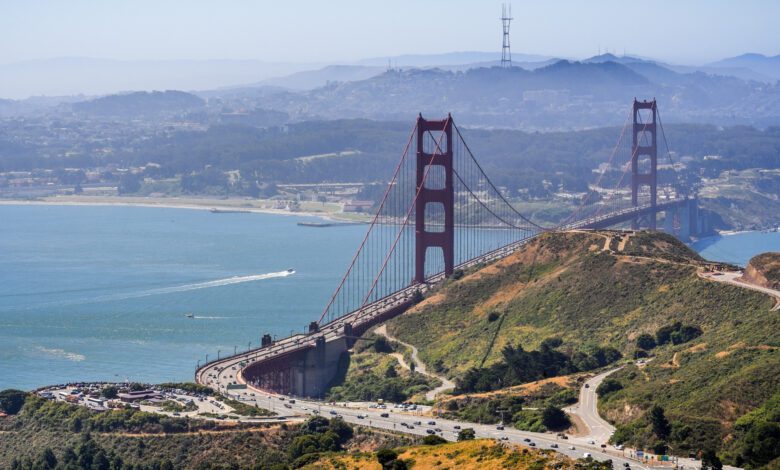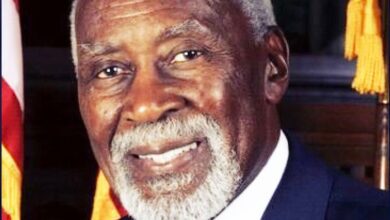
As California Invests Billions in Cap-and-Trade Earnings, Advocates Urge Better Public Awareness, More Impactful Spending
Tanu Henry | California Black Media
California officials say they are stepping up funding aimed at achieving its goal of net-zero carbon pollution by 2045.
According to a report released earlier this month by the by the California Air Resources Board (CARB), the state has reinvested $33 billion earned from its cap-and-trade program into communities.
But as the state spends millions on green projects in cities and towns across the state, some advocates say residents do not know enough about the program and how they can directly benefit from it. They also point out that most of the investments do not address the biggest challenges Black Californians and other underserved communities face.
“California is earning billions from cap-and-trade, but we are still paying the highest price for fuel in the country. What is the return on investments in our disadvantaged communities?” said P. Anthony Thomas, managing partner of the Thomas Advocacy Group, a lobbying, public affairs and coalition-building firm based in Sacramento.
Thomas, who is also a member of the Black Environmental Justice Coalition, says cap-and-trade is a good thing, “a balancing act,” and, designed strategically, the program can serve the interests of businesses, the energy sector, government and all communities.
On May 7, Gov. Gavin Newsom released a statement after the CARB report was released.
“California is proving that cutting pollution creates jobs and boosts communities. By holding polluters accountable, we’re sending billions of dollars back to communities and back to people’s wallets through credits on utility bills,” Newsom said.
According to CARB, the investments cover a range of priorities — from funding clean buses and other green mobility options and building greener housing to providing rebates for Zero Emissions Vehicles (ZEVs) and supporting tree planting and other renewable energy initiatives.
“We’ve got the receipts: healthier and cleaner communities and thousands of good paying jobs,” added Newsom, who along with Assembly Speaker Robert Rivas (D-Hollister) and Senate Pro Tem Mike McGuire (D-Healdsburg) are urging the state lawmakers to extend the cap-and-trade program, a market-based program designed to reduce Greenhouse Gas Emissions (GHG).
Every year, California sets an annual “cap” on about on about 80% of GHG generated by corporations considered “largest polluters in the state.” The state allocates no-cost allowances to some companies as incentives every year. Those entities must, however, purchase the remainder of the allowances from the state at quarterly auctions if they exceed established limits.
California’s announcement about investing billions in cap-and-trade proceeds comes as the federal government applies pressure on states to abandon climate programs it says prevent the U.S. energy industry from maximizing its output.
In an April 8 White House executive order, President Trump directly referenced California’s cap-and-trade program.
“California, for example, punishes carbon use by adopting impossible caps on the amount of carbon businesses may use, all but forcing businesses to pay large sums to “trade” carbon credits to meet California’s radical requirements,” the White House executive order reads.
It continues, “these State laws and policies weaken our national security and devastate Americans by driving up energy costs for families coast-to-coast, despite some of these families not living or voting in States with these crippling policies.”
Liane M. Randolph, Chair of CARB, says as the federal government is “trying to tear down California’s authority to address harmful pollution,” the state is also facing budget constraints.
Nonetheless, we can and must remain optimistic. The recent passage of the climate bond – Proposition 4 authorizes the state to use $10 billion to protect vulnerable communities and build climate resilience,” said Randolph, who pointed out that 90% of the projects impact vulnerable or “priority communities,” including Black Californians and others impacted disproportionately by pollution and other adverse environmental factors.
On May 7, CARB organized a virtual news briefing with California media outlets to discuss the report and inform the public about the investments. On the panel, Randolph joined California Secretary of Transportation Toks Omishakin; Secretary Yana Garcia, California Environmental Protection Agency; and Amanda Hansen, Deputy Secretary for Climate Change, California Natural Resources Agency.
California Black Media (CBM) asked Omishakin about the program’s impact and the need for more awareness
“These investments fund a wide range of initiatives, including cleaner transportation modes like transit e-bikes and scooters, zero emission trucks and buses, zero and near-zero mobility options like car sharing and cleaner off road equipment rebates to make zero emissions and plug in hybrids more affordable,” said Omishakin.
Omishakin, however acknowledged, that the state can do more done to inform the public about the cap-and-trade program
The same day, the non-partisan Legislative Analyst’s Office (LAO) released a report advising the Legislature about the costs of reauthorizing the cap-and-trade program. It warns that paying for the allowances could force companies to pass the costs to consumers but acknowledges that the program is critical for reaching the state’s carbon goals.
According to the LAO, the design of the program should be the foremost consideration, adding that it must “reflect legislative priorities.”
“Whichever approaches the Legislature chooses to adopt, we encourage it to ensure that its key policy priorities are reflected in the design and operation of the program going forward, including providing clear statutory direction when applicable,” the report reads.
Thomas said he is hopeful that the state will take steps to better balance the interests of all stakeholders and provide more information to the public about cap-and-trade.
“What is the net that has been cast to inform the general public and who are you working with to get the message the general public?” he asked. “What is your mechanism of communication. If this should impact disadvantaged communities, where are the disadvantaged communities? Are they in Oak Park, South LA, the East Bay?”




